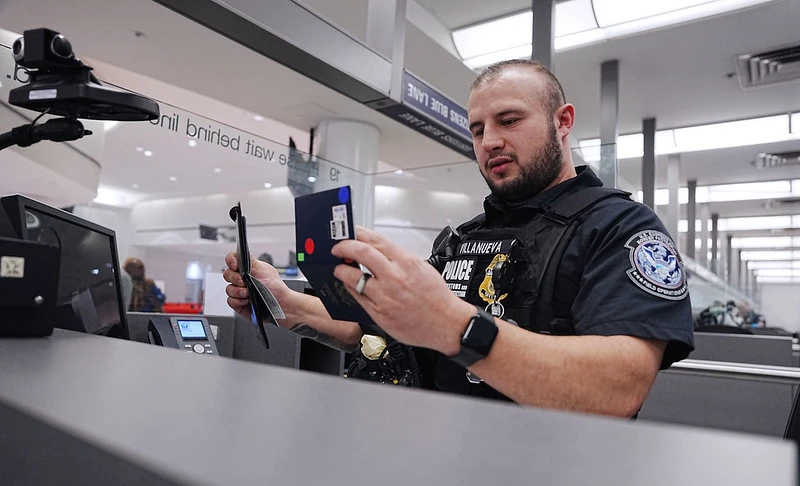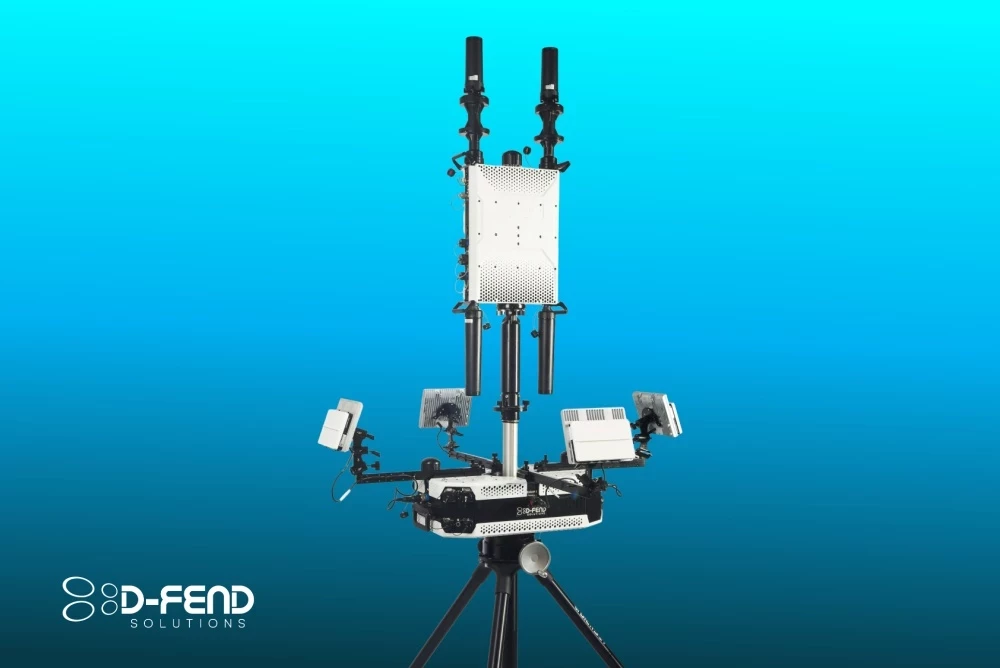How the ‘One Big Beautiful Bill’ Is Reshaping Biometric Capabilities at U.S. Borders
Add bookmark
President Trump’s One Big Beautiful Bill Act was signed into law this Summer and provides billions of dollars in funding to federal border security and immigration enforcement agencies such as CBP and ICE. One area of operations that will see a large funding boost is biometric technology solutions.
Biometric technologies have become critical to both federal entities, with CBP deploying biometrics solutions at airports, seaports, and land borders across the states. While ICE frequently shares biometric information partners in state/local law enforcement and, has developed a repository of biometric information related to criminal investigations known as the Enforcement Integrated Database (EID).
This article will highlight the current biometric capabilities for ICE and CBP before looking at how OBBBA will transform biometric capabilities for these law enforcement organizations.
To hear directly from biometrics leaders from these agencies, register for IDGA’s Biometrics for Government & Law Enforcement Summit taking place November 19-20 in Reston, Virginia. This two-day summit will provide attendees with ground-breaking and informative content on the latest technology developments as well as overviews of the key challenges and initiatives government and law enforcement agencies are facing.
Current Biometric Capabilities of CBP and ICE
Customs and Border Protection
Currently, CBP deploys a comprehensive multimodal biometric strategy to identify and process individuals at and between ports of entry. This strategy uses multiple biometric modalities, including facial recognition, fingerprinting, iris recognition, and DNA, to ensure accurate identification.
CBP has become a leader in facial biometric comparison technology, and currently leverages facial comparison technology at airports and land ports of entry, both for vehicles and travelers on foot.
To leverage its strong facial recognition technologies, CBP has deployed the Travelers Verification Service (TVS), which supports comprehensive biometric procedures for travelers to enter and exit the U.S. through any legal method and port of entry.
In terms of other modalities, CBP continues to rely on Automated Biometric Identification System (IDENT) for fingerprint matching, which serves as a cornerstone solution in its efforts to apprehend individuals who might pose security threats as they attempt crossing into the United States. CBP is also looking to expand its use of iris scanning capabilities in high-security environments thanks to the modality's accuracy and non-invasiveness.
Immigration and Customs Enforcement
ICE has historically relied on advanced biometric systems to enhance identification abilities for individuals subject to removal proceedings. This includes fingerprint and facial recognition technology to cross-reference across criminal and immigration databases.
One program that has become critical to ICE’s ability to enforce immigration laws within the U.S. is the Biometric Identification Transnational Migration Alert Program (BITMAP).
BITMAP is a host-country-led, Homeland Security Investigations (HSI) supported program in which foreign law enforcement agencies are trained and equipped by HSI to collect biometric and biographic (e.g., names, dates of birth, nationalities) data on third-country nationals, meaning individuals who are not citizens of the host country and are suspected of involvement in criminal or illicit cross-border activity.
How OBBBA Will Impact Biometrics on the Border
OBBBA will make one of the largest investments in U.S. border security in history with over $21 billion allocated for border modernization, including record funding for biometrics and artificial intelligence. The section of the bill titled “Border Security, Screening, and Testing” lays out added funding towards biometrics, stating: “Necessary expenses, including the deployment of technology, relating to the biometric entry and exit system under section 7208 of the Intelligence Reform and Terrorism Prevention Act of 2004.” Meaning, these resources will be in addition to funding already determined in the FY 2025 budget for DHS.
The bill lays out $673 million for biometric entry-exit systems at all ports of entry, $2.77 billion for AI-powered Autonomous Surveillance Towers (ASTs), and $5.2 billion for modernizing ICE, including real-time facial and fingerprint checks via mobile apps.
OBBBA also expands biometric monitoring into domestic transportation corridors, and mandates integration of DHS and DOJ biometric databases to broaden law enforcement access.
In addition to a focus on supporting growth in biometrics, OBBBA recognizes advanced biometric equipment will have to coincide with the implementation of AI solutions. Which is why the act also includes a provision stating DHS immigration enforcement agencies will procure and integrate new nonintrusive inspection equipment with a focus on AI and machine learning.
By allocating resources towards AI-driven biometric systems, CBP and ICE can harness the power of predictive analytics and real-time data processing to bolster their security posture.
DHS must submit detailed spending plans within 45 days of the law’s enactment and is required to ensure biometric exit capabilities at all major land ports of entry by September 2026, or it risks losing portions of its funding.

























